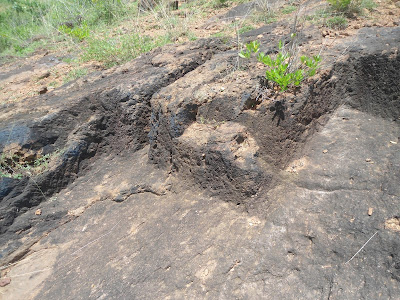Coastal areas are one of the most dynamic environments on the earth and area being constantly re-shaped by both natural processes and human development. The east coast of India particularly the coastal regions of Odisha and Andhra Pradesh are severe prone to cyclonic storms.
Disaster preparedness refers to measures taken to prepare for and reduce the effects of disasters. That is, to predict and, where possible, prevent disasters, mitigate their impact on vulnerable populations, and respond to and effectively cope with their consequences. Disaster Management can be defined as the organization and management of resources and responsibilities for dealing with all humanitarian aspects of emergencies.
A visit of coastal Ecosystems in and around Visakhapatnam on the notes of ecologically sustainable disaster preparedness and management has been done by Disaster Management Training Center (DMTC), University of Tokyo, Japan under my supervision on 10th and 11th December 2018. The DMTC team was at Visakhapatnam for a conference on "Disaster Mitigation and Management" at GITAM University. It was pleasure to meet the dignitaries and discuss with them on ecological aspects of Visakhapatnam.
The dignitaries were Dr. Muneyoshi Numada, Dr. Yasmin Bhattacharya, Dr. Shiozaki Yuto, Dr. Chaitanya Krishna, Ms. Sumiyo Okawa, Mr. Kishor Timsina, Mr. Hossain Shakawat , Mr. Ganesh Jimee along with Dr. P.V. Unnikrishnan.
Me explaining the biological role of a sand binder at Sagar Nagar beach
Discussing about the natural coastal forest ecosystem at Seetakonda
The rapid industrialization has put immense pressure on Shelter belts along the coastal region in India. As per National Green Tribunal and Coastal Regulatory Zone norms there should be 500 meters from the seashore should be filled with shelter belts. A shelter belt can make a coast safe from cyclonic effect if maintained well. The East coast of India is a regular tropical cyclone zone and needs a shelter belt with endemic flora.
Explaining about the importance of shelter belts and natural dunes at Bheemunipatnam.
A windbreak or shelter belt is a plantation usually made up of one or more rows of trees or shrubs planted in such a manner as to provide shelter from the wind and to protect soil from erosion. This technique can be implemented along sea coasts also to protect from coastal erosion's, storms and winds. The other benefits include providing habitat for wildlife and in some regions the trees are harvested for wood products.
A Discussion about eroded slopes near Rushikonda
Dunes provide habitat for highly specialized plants and animals, including rare and endangered species. They can protect beaches from erosion and recruit sand to eroded beaches. Stabilizing dunes involves multiple actions. Planting vegetation reduces the impact of wind and water. It can help retain sand and other material needed for a healthy sand dune ecosystem.
With DMTC team at Jodugullapalem Beach
The erosion of foot hills and degradation of hillocks is a serious issue related to ecology in that particular region.Vegetation and slope stability should be classified as an important factor for improving the green cover on degraded hills. The hilltop removal also affects the hill slope degradation along with many factors. There are four major ways in which vegetation influences slope stability: wind throwing, the removal of water, mass of vegetation (surcharge), and mechanical reinforcement of roots.
Dr. Muneyoshi Numada, director DMTC at Disaster Management workshop
Me along with Mr. Raju, Dr. Yasmin, Dr. Shiozaki, Ms. Prasanna and Mr. Rayudu
Me along with Dr. P.V. Unnikrishnan, Dr. Yasmin, Dr. Shiozaki at Bheemili
After a visit of coastal ecosystems from Bheemunipatnam to RK Beach in Vizag the team got to an idea of how natural resilience can be included as priority in Disaster Management. I have been invited to work along with DMTC Japan in the near future on inclusion of "Natural Resilience in Disaster Management". I thank Dr. Unni Krishnan and Environmentalist Mr. J.V. Ratnam who made this possible.
It is our basic responsibility to protect our Ecosystem







































